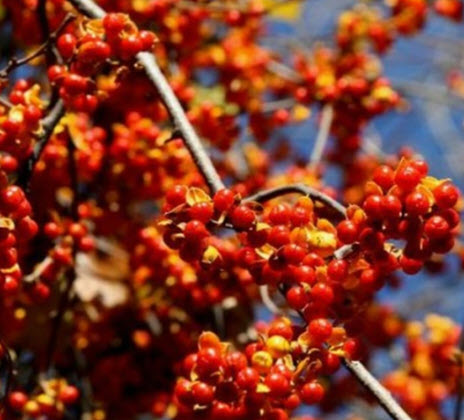Click below to listen to my 2 min. Garden Bite radio show: Oriental Bittersweet – Pretty obnoxious
As we approach the holidays, this is a perennial topic now. Oriental bittersweet is pretty obnoxious… see how I did that? Pretty, yes, obnoxious, most definitely!

Used so often in decorations, this lovely looking vine is deceitful as it’s invasive qualities haunt our forests, grasslands, and parks! Sounds a bit harsh for such a well used holiday decoration but it’s true.
This invasive has penetrated our native areas to the point that it’s at the top of the list for ERADICATION! The vine is heavily affecting the northeastern U.S. and infecting Iowa, Wisconsin and Minnesota. Other resources include My Minnesota Woods and Minnesota Wildflowers.
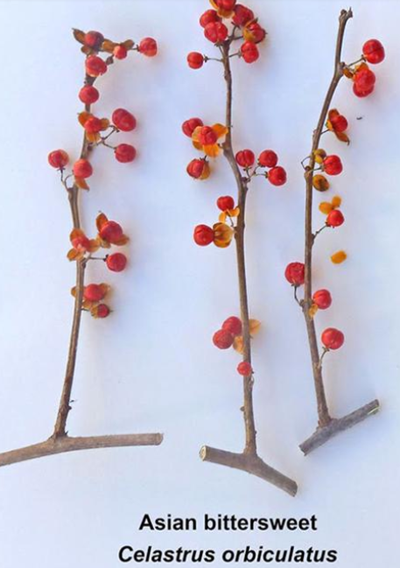
Here’s a close-up, notice the yellow capsules and the way the berries are placed on the branch.
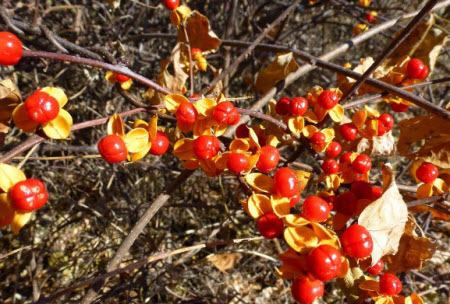
Seed capsules: Oriental bittersweet has yellow seed capsules on red berries (Give a yell when you see yellow.) whereas American bittersweet has orange seed capsules on red berries (Orange is OK.) Berry placement: Oriental bittersweet has berries strung-out along the stem (Strungout is bad) while American bittersweet’s berries are all clustered near the end (Saving the best for last). This is taken from My Minnesota Woods.
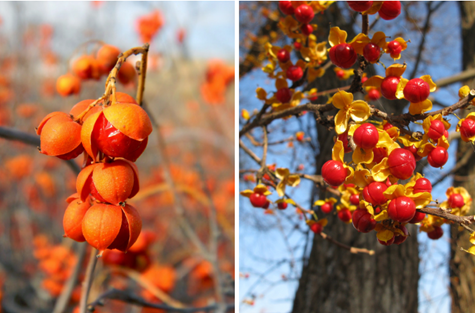

The vines of the Oriental bittersweet wrap around trees like a boa constrictor essentially strangling our native vegetation!
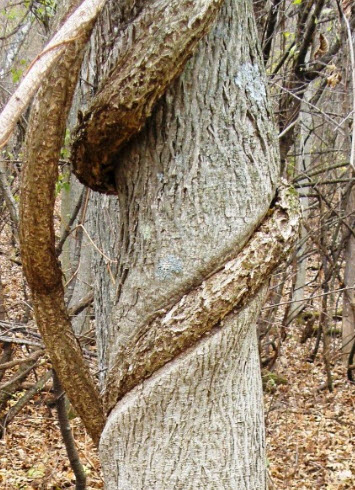
More information and pictures from Illinois EDU.
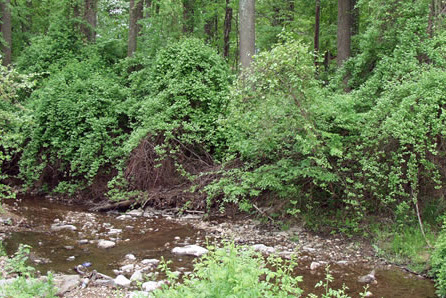

Though it prefers forest edges and sunlight, Oriental bittersweet can grow in forest understories, eventually reaching forest canopies, shading the trees and understory and preventing native plant species from flourishing.
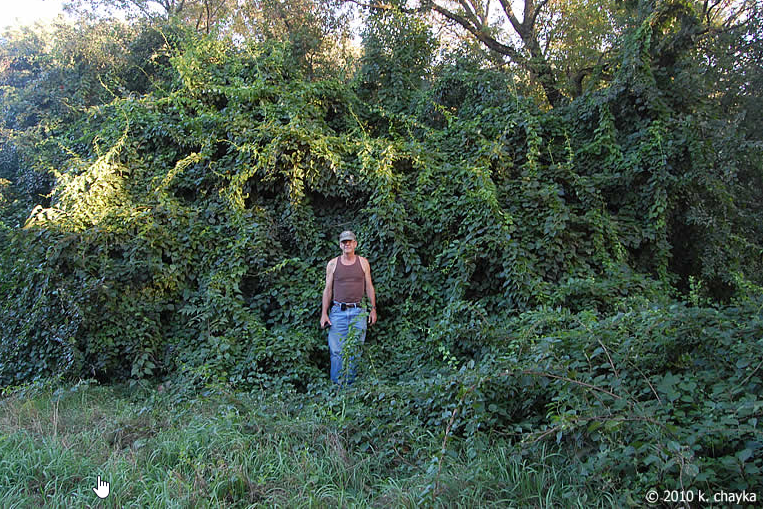
Infestations can become so thick that wildlife, such as deer, can have difficulty navigating through wooded areas filled with it.
The persistent berries that make wreaths delightfully charming easily spread the seed of this terrible invasive.

This is not our native American Bittersweet! Yes, it may be (somewhat) prettier but it doesn’t belong here because it doesn’t play well with others, such as our native plants.

The seeds of Oriental bittersweet are easily dispersed, and are commonly spread when birds eat the fruit or people dispose of craft or floral arrangements in compost and brush heaps. Reproduction also occurs through vegetative root suckering.
Bottom line: to an untrained eye, it can be confusing but a closer look shows it’s obvious which is American and which is Oriental. Before you buy, take a real close look!
More on our native American Bittersweet from the Morton Arboretum in Chicago, Johnson’s Nursery in Wisconsin and Minnesota Wild Flowers
